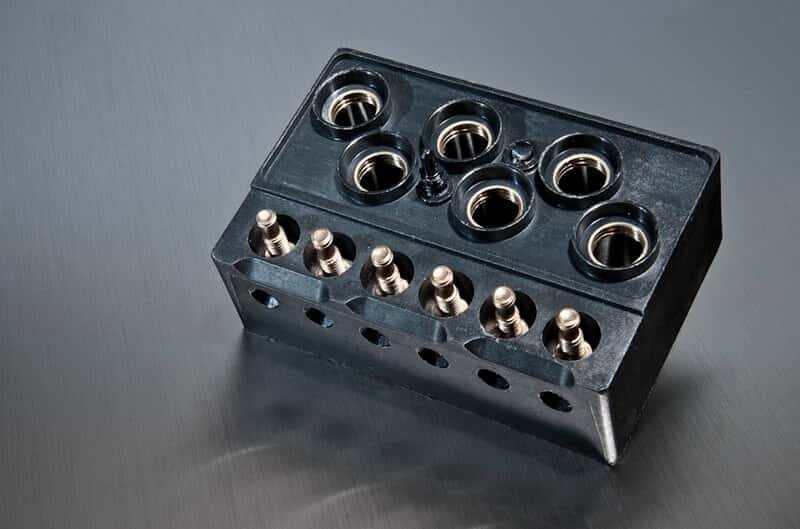In the realm of modern manufacturing, the quest for stronger, more durable components is a constant pursuit. Insert molding, a specialized technique that combines injection molding with the integration of pre-formed components (inserts), has emerged as a powerful solution for enhancing strength and durability. Among the various types of inserts, metal inserts hold a special place, offering unparalleled mechanical properties and structural reinforcement. In this article, we will delve into the process of integrating metal inserts through insert molding, its benefits, applications, and the ways it enhances strength in manufactured components.
Understanding Insert Molding and Metal Inserts
Insert molding is a manufacturing process that involves injecting molten material, typically a thermoplastic resin, around pre-formed inserts to create a single, integrated part. Metal inserts, which can be made of various metals such as steel, aluminum, or brass, are commonly used for their superior mechanical properties, including high tensile strength, stiffness, and thermal conductivity. These metal inserts are strategically placed within the mold cavity before injection molding, where they become encapsulated within the molded part.
Benefits of Integrating Metal Inserts
Enhanced Strength and Rigidity: Metal inserts provide structural reinforcement to molded parts, enhancing their overall strength and rigidity. By encapsulating metal inserts within the molded material, manufacturers can create components capable of withstanding higher loads, impacts, and environmental stresses.
Improved Wear Resistance: Metal inserts offer superior wear resistance compared to plastic or composite materials, making them ideal for components subjected to friction, abrasion, or repetitive motion. By integrating metal inserts into wear-prone areas of molded parts, manufacturers can prolong the service life and durability of components.
Heat Dissipation: Metals possess excellent thermal conductivity, allowing them to dissipate heat more efficiently than plastics or composites. By integrating metal inserts into heat-generating components, such as electronic enclosures or automotive engine parts, manufacturers can improve thermal management and prevent overheating, enhancing component performance and reliability.
Threaded Inserts: Metal inserts with threaded features can be integrated into molded parts to create threaded connections for fasteners, screws, or bolts. These threaded inserts provide secure attachment points and enable easy assembly and disassembly of components, facilitating maintenance, repair, and reconfiguration.
Corrosion Resistance: Certain metals, such as stainless steel or aluminum alloys, offer excellent corrosion resistance, making them ideal for components exposed to harsh environments or corrosive substances. By encapsulating metal inserts within molded parts, manufacturers can protect against corrosion, rust, and degradation, ensuring long-term durability and reliability.
Applications of Metal Inserts in Insert Molding
Metal inserts find widespread application across various industries and components, including:
Automotive Components: Metal inserts are commonly used in automotive components such as brackets, mounts, connectors, and structural reinforcements. These components require high strength, rigidity, and durability to withstand the rigors of automotive applications, making metal inserts an ideal choice for enhancing performance and reliability.
Electrical and Electronic Components: Metal inserts are utilized in electrical and electronic components such as connectors, terminals, and heat sinks. These components require efficient heat dissipation, reliable electrical conductivity, and mechanical stability, making metal inserts essential for optimizing performance and longevity.
Medical Devices: Metal inserts are employed in medical devices such as surgical instruments, drug delivery systems, and diagnostic equipment. These components demand high precision, biocompatibility, and sterilizability, making metal inserts indispensable for ensuring reliability, safety, and functionality in critical healthcare applications.
Consumer Goods: Metal inserts are integrated into consumer goods such as appliances, sporting equipment, and power tools. These components require durability, wear resistance, and mechanical strength to withstand everyday use and abuse, making metal inserts a preferred choice for enhancing product performance and longevity.
The Process of Integrating Metal Inserts through Insert Molding
The process of integrating metal inserts through insert molding involves several key steps:
Insert Preparation: Metal inserts are prepared by cleaning, surface treatment, and/or preheating to ensure optimal bonding with the molded material. Surface treatment techniques such as etching, plasma treatment, or chemical priming may be employed to improve adhesion between the metal surface and the molded material.
Mold Design: The mold is designed to accommodate the metal inserts and facilitate uniform material flow around them during injection molding. Features such as insert guides, gating systems, and cooling channels are incorporated into the mold design to optimize part quality and dimensional stability.
Insert Placement: Metal inserts are strategically placed within the mold cavity before injection molding. Automated insert placement systems may be used to ensure precise positioning and alignment of inserts, minimizing the risk of errors and defects in the final part.
Injection Molding: Molten material, typically a thermoplastic resin, is injected into the mold cavity under high pressure. The molten material flows around the metal inserts, encapsulating them within the molded part. Proper injection molding parameters, such as temperature, pressure, and injection speed, are controlled to achieve optimal part quality and consistency.
Cooling and Ejection: Once the molten material has solidified, the mold is cooled to facilitate part solidification and dimensional stability. The molded part is then ejected from the mold cavity, and any excess material or flash is removed to achieve the desired finish.
Conclusion
In conclusion, integrating metal inserts through insert molding is a powerful technique for enhancing strength, durability, and performance in manufactured components. By encapsulating metal inserts within molded parts, manufacturers can achieve structural reinforcement, improved wear resistance, efficient heat dissipation, and corrosion resistance, meeting the stringent requirements of various industries and applications. As industries continue to innovate and evolve, the integration of metal inserts through insert molding will remain a cornerstone of modern manufacturing, driving advancements in component design, performance, and reliability.



